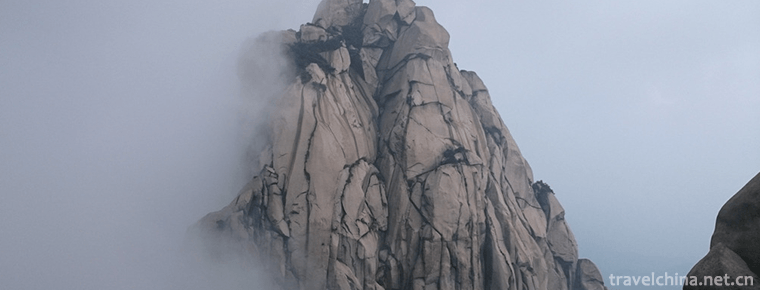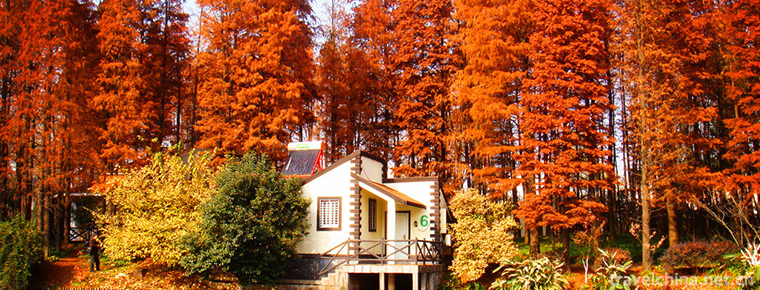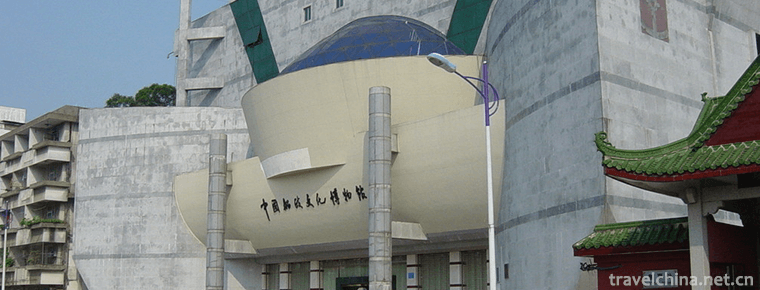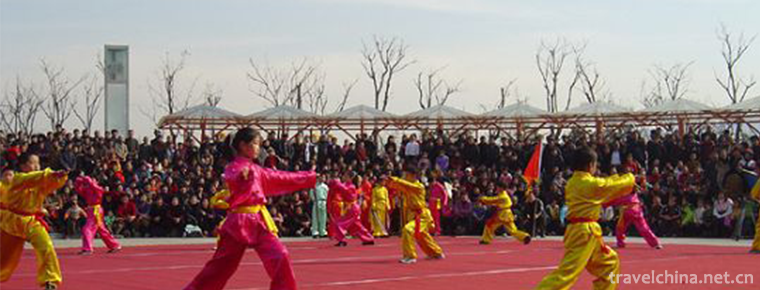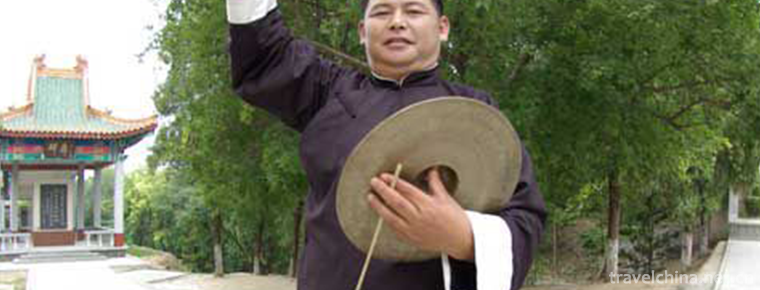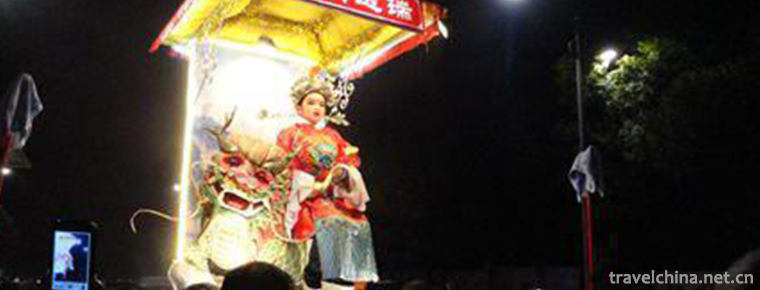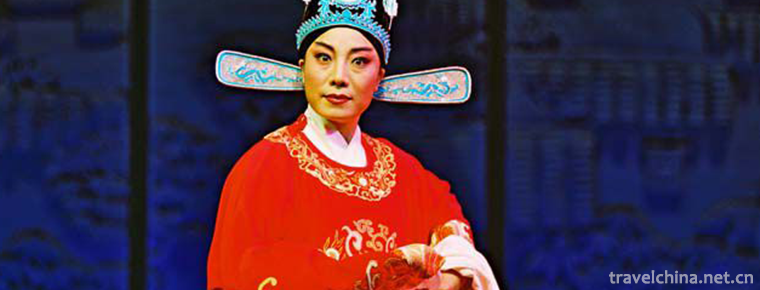Lishui Shipmans Chant
Lishui Shipmans Chant
Lishui Shipman's Chant is a unique work chant transformed from local minor. It is a kind of traditional folk music with strong rhythm, which reflects the hard life of the shipmen and the work scene in the battle of heaven and earth. Lishui is one of the four major river systems in Hunan Province. The area of the river basin is 18496 square kilometers, and the topography of each flow section changes greatly. Shipmen sing various chants to adapt to various flow conditions. Lishui Shipman's chant does not have a fixed song book and lyrics, nor does it need to be specially taught by his predecessors. It is handed down from generation to generation. Most of them arise from improvisation because of time and place. They blurt out and are more popular. Lishui Shipman's chant has rich tones, complex rhythm changes and multi-voice music texture, which is an important part of China's labor chant.
In 2006, Lishui Shipman's number was listed in the first batch of national intangible cultural heritage list with the approval of the State Council.
historical origin
Historical origin
The Lishui Shipman's song was produced in Lishui River basin. Lixian County is a dependency of the ancient Chu State. After the Sui and Tang Dynasties, it was often called Lizhou or Liyang County. It is an important town in Northwest Hunan. Known as the "Jiuli Portal", it is naturally the political and economic cultural center of Northwest Hunan. With Lishui flowing from west to east, it became an important commercial port in the Ming and Qing Dynasties and a distribution center for the import and export of materials in Northwest Hunan. Long-distance transport can only be carried by water. Therefore, most of the working people in Lishui, Lishui and along the Daohe River in Lixian County rely on shipping for their livelihood. There are nearly 1,000 boats berthed, many masts, less than 10,000 boatmen and 8,000 boatmen, and there are not less than 20 woodworkers per large wooden boat. In order to concentrate strength, inspire spirit and unify pace, the local minor is naturally transformed into a unique labor slogan, that is, the "Lishui Shipman's slogan".
Evolution of development
Before the 21st Century
Lishui Shipyard has a history of more than 500 years since its formation in the mid-Ming Dynasty. It has been widely spread and has far-reaching influence. The mid-Ming Dynasty was the germination period of "Lishui Shipman's Chant", and the late Qing Dynasty and early Republic of China were the prevailing period.
In 1956, the folk music collecting group led by Yang Yingliu, director of the Central Music Research Institute, came to Changde and Lixian to collect the songs of Lishui boatmen. Later, Hunan Song and Dance Troupe organized rehearsal, participated in the national folk music performance, won the first prize of folk music. Soon after the National Orchestra of the Central Song and Dance Troupe reorganized in Beijing, it went abroad to perform in Moscow, Hungary and other countries and won international prizes. At the same time, China Record Company published and released records. In 1961, it was broadcasted to the whole country by the Central People's Broadcasting Station. In 1980, it was republished in Volume I of Chinese Folk Songs by Shanghai Literature and Art Publishing House. In 1981, Lishui Shipman's Number was selected and compiled in Selected Folk Songs of Hunan Province, which was listed as a music textbook for secondary normal schools.
Twenty-first Century
On May 20, 2006, Lishui Shipman's number was approved by the State Council and listed in the first batch of national intangible cultural heritage list.
Lishui Shipman's number was originally formed with the emergence of merchant ships, and developed with the development of merchant ships, and was endangered with the disappearance of wooden merchant ships. Since the reform and opening up, the transportation industry has made rapid progress. Automobile and train transportation have replaced the water transportation in Lishui River. Ninety percent of the boat people have already changed their ways and made a living. The boat workers'fibre drawing has become a relic. In this case, the old Lishui boatman's name is on the verge of being lost.
During the Eleventh Five-Year Plan period, Lishui Shipman's slogan has been carried out in an orderly way in Lixian County, and has made gratifying achievements in its inheritance, singing and inheritance. Among them, a "Lixian Folk Music Learning Base" has been established in the middle school, and a new school-based textbook has been compiled to pilot the "Lishui Shipman's Chant" in Chengguan Middle School. The newly compiled song and dance program "Lishui Shipman's Number" was performed by Jinghe Opera Troupe throughout the county. In Lixian County, a general survey was carried out to collect and sort out the data and music of "Lishui Shipman's Number" and improve the archives and information database of inheritors in Lixian County.
In 2006, the Hunan Farmers'Games were held in Changde. Li Xiaoping, a young composer of Changde Art Research Institute, created the "Lishui Boatman" by referring to previous music materials, and performed at the opening ceremony of the Farmers' Games after a strong dance.
In 2011, in order to promote the promulgation and implementation of the Law of the People's Republic of China on Non-material Cultural Heritage, the Shanghai Municipal Center for the Protection of Non-material Cultural Heritage and the Shanghai Yangpu District Cultural Bureau jointly organized the "Yangtze River Valley Folk Song Chant Exchange and Exhibition Activity". In order to participate in the event, Hunan's "Lishui Shipman's Chant" team, composed of Hunan Normal University Conservatory of Music and Lixian Wenguang New Bureau, spent more than one month rearranging the program and organizing training. On June 3, 2011, as one of the nine folk song chant teams participating in the Star Theatre of Shanghai Yangpu Cultural Museum, they displayed a program closer to the original ecology. It shows the working scenes of Lishui boat workers, the hardships and joys of the boat workers, makes people experience the bitterness of the boat workers, and has won the warm applause of nearly a thousand audiences.
From April 2011, at the invitation of Hunan Academy of Arts and Sciences, composer Luo Jinan of Changde and Li Xiaoping of Changde processed the "Lishui Boatman" and added the Lyric "Youmei" section and the more vigorous "Beach-grabbing" section according to the dance creativity, and named it "Lishui Boatman" according to the opinions of all parties. The whole dance is divided into three parts, which are composed of the dance segments of "Ping Shui Xiaozi", "Yi Mei Zi" and "Grabbing Beach". Through the changeable and vigorous dance movements, Lishui Boatman vividly shows his intense and intense working life and optimistic, proud, resolute and brave character. Since its creation and formation, this dance has won the Golden Prize of the Third National College Students Art Exhibition. It has performed many performances in provinces and municipalities, and has been well received by the audience. On May 4, 2013, the dance participated in the live performance of CCTV's May Flowers, Our Chinese Dream, 2013 National College Students Campus Arts Festival Performance.
In 2014, Lishui Shipmen's Chant related programs also appeared in various local literary and artistic performances and large-scale concerts in Hunan Province from time to time.
Main classification
Regional difference
Because of the different regions, Lishui Shipman's chant can be divided into two kinds: Shanghe Channel refers to the stone gate, below Sangzhi, because of the high mountains and water, narrow river gorges, more beach reefs, and very dangerous shipping, so the Shipman's chant appears to be high-spirited, rapid and powerful, fast rhythm, more linings than lyrics, fearless combat, with the number of swaying boards as the main;
From Lixian down to Anxiang, Jinshi City, it is Dayuan in northern Hunan, with flat terrain and broad river surface. Although there are strong winds and waves, it is much more gentle than the upper river basin. Therefore, the voice of "Lishui Shipman's Channel" tends to be smooth and elegant, with a slightly slow rhythm, which is called "Xiahe Tune".
There is no absolute boundary between the upper and lower rivers. The flat and the fast board can be used alternately according to the time and place, but there is only a slight change in the acoustic cavity.
Singing plate type
Lishui Shipman's Chant can be divided into four types: flat board, number board, fast board and slow board.
1. Flat plate, also known as "cough of younger sister", is sung when swaying in the gentle flow section.
2. Number board, also known as "low chamber", has a compact rhythm and a fast speed, which is sung in deep water.
3. Allegro, also known as "Gaoqiang", is a trumpet sung when swaying in deep water and fighting against rapids.
4. Adagio, commonly known as the "three-luo platform", is a trumpet used in deep water swing slowly, with steady rhythm and deep tone.
Application occasion
Lishui Shipman's chant can be roughly divided into three kinds according to its use: loading chant, launching chant and launching chant.
artistic characteristics
In Introduction to Folk Songs published by People's Music Publishing House, Professor Song Daneng of Sichuan Conservatory of Music concluded that "Lishui Shipman's Chant in Lixian County, Hunan Province, is a well-known and representative boat-going chant with unique artistic style, distinct local color and complete set in structure".
Musical elements
Lishui Shipman's Channel is folk music. Many Lishui Shipmen come from Miao and Tujia nationalities in Northwest Hunan. Therefore, in the process of Lishui Shipman's Channel's development, the local minority's musical elements such as tone, decorative tone, lining and so on are integrated, and the musical expression shows multi-ethnic characteristics. In terms of tone, Lishui Shipman's Channel generally adopts ethnic feathers. The tune is similar to Tujia's intoned but simple melodic tone ("A Line of Chestnut Blossoms"); in the use of decorative tones, Lishui Shipman's chant borrows from the rich and changeable features of Miao's music, such as decorative tone and glide tone, and uses fake voice to sing high tune and true voice to sing flat tune, which are also different from Miao's music; in the use of lining words, Miao's chant is widely used. The lining words in Tujia music, such as yo, cough, ah, ah, ah, ah, ah, la, lo, ah, ah, hey, li, ho, etc. Therefore, a comprehensive analysis of the music characteristics of Lishui Shipman's chant fully reflects the characteristics of the national diversity of music elements and the great integration of national culture.
Libretto
The sentence pattern of Lishui Shipman's chant is divided into seven words and five words. It is usually led by one person and sung by others in chorus with great momentum and vigor.
Especially the three singing tunes of adagio, flat panel and steep board have their own characteristics. They can effectively depict the perseverance, bravery and hard working character and temperament of the boatmen while sailing. They vividly show the scenes of the boatmen when they are engaged in poles, swaying and fibre drawing under different circumstances and conditions. They leave a deep impression on people and are always loved by the masses of the people.
The Lishui Shipman's slogan, which is popular but full of artistic charm, reflects the hard life and work scene of the shipworkers. Such as "the sun comes out red all over the sky, the sailors sweat wet clothes", "mountains and rivers need not be afraid of danger, step by step to step forward and climb steadily".
In addition, there are also special chants for boat owners and onlookers, such as "Alpine clouds immediately arrived, stretching fibers like overpasses, muddy roads slippery and difficult to walk, sweat and rain flowing into troughs", "wind blowing River bends, lover letters to wear shoes" and so on.
Singing style
Its singing form can be divided into three different styles:
1. Rolling or singing when towing goods against the water.
2. Recreational singing. After the ship stops at the wharf, the boatman shouts his own number. Most of them are self-entertainment and love between men and women.
3. Stage performance and singing, generally according to the tone of the ship workers'number, to create new ship workers' number to participate in various literary and artistic activities.
Representative works
The dance is divided into three parts, which are composed of the dance segments of "The Horizontal Waterfront Chant", "Youmei" and "Grabbing Beach"
Inheritance significance
Lishui Shipman's chant has its unique artistic value:
First, with a long history, it faithfully records the tears and hearts of the Lishui boat workers, demonstrates the spirit of the working people to fight with nature. At the same time, northwest Hunan is a place where many ethnic groups such as Miao and Tujia live together. Many of the Lishui boat workers come from ethnic minorities. The Lishui boatman's number symbolizes the great unity of the Lishui nationalities, twisting a rope, struggling hard and daring to open up. As a pioneering national spirit, it is one of the cultural heritage of the Chinese people.
Second, it has strong local color and distinct folk music characteristics, rough, thick, strong, high-pitched and harmonious. In the stormy waves, it is a kind of folk music with practical value, which can be used in all large-scale labor scenes, such as flood fighting and rescue, railway transportation and sports. This kind of work slogan can be used in river competitions and other competitions to exert collective strength.

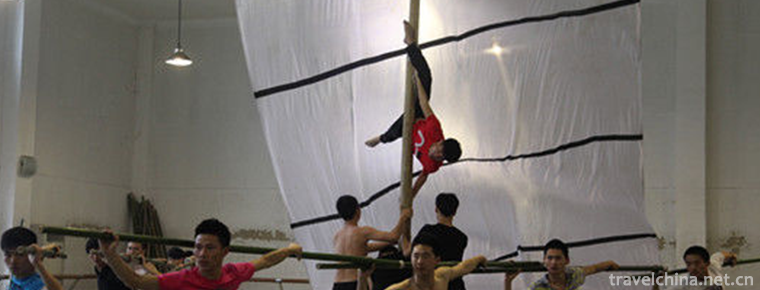
-
Mount Tianzhu Scenic Area
Tianzhu Mountain Scenic Spot, located in the west of Qianshan City, Anqing City, Anhui Province, is known as "the first mountain in the Yangtze River and Huaihe River" for its main peak.
Views: 118 Time 2018-12-08 -
Legend of White Snake
Legend of White Snake, local traditional folk literature in Zhenjiang City, Jiangsu Province and Hangzhou City, Zhejiang Province, is one of the national intangible cultural heritage..
Views: 154 Time 2018-12-15 -
GongQing Forest Park
Gongqing Forest Park is located in Yangpu District, Shanghai. It is bordered by Huangpu River in the East and Military Road in the west. The total area of the park is 1965 mu, and the open public.
Views: 305 Time 2018-12-24 -
Mawei Shipping Museum
The Mawei Shipbuilding Cultural Heritage Group in Fuzhou is centered on the Chinese Shipbuilding Cultural Museum, including Zhongpo Battery, Zhaozhong Temple, British Consulate.
Views: 205 Time 2019-02-06 -
Bouyei Leyou
Le You and Le Lang are Buyi oboe gas song instruments. They resemble suona, bowl-less, insect whistle playing, bright and sweet timbre. It can be used for Solo or singing accompaniment.
Views: 166 Time 2019-04-04 -
Legend of Camel Spring
Camel Spring is a provincial key cultural relic protection unit and a patriotic education base. Located in Jiezi Township Unity Village, with convenient transportation and direct access to tertiary oi.
Views: 142 Time 2019-05-15 -
Meishan Wushu
Meishan Wushu is a traditional school of Wushu which is spread in Hunan Province. Xinhua is an ancient and magical land. It has not only nurtured many historical celebrities, but also cultivated Meish.
Views: 110 Time 2019-06-03 -
Laozi Shandong Province
Shandong Laozi is a traditional opera art form which spreads in Shandong Province. It evolved from the ancient "lotus flower falls". Laozi instruments are mainly cymbals (commonly known as G.
Views: 164 Time 2019-06-13 -
Raise the Pavilion
Lifting the pavilion, also known as the pavilion, is a unique traditional folk dance that integrates historical stories, myths and legends, and integrates painting, opera, tie-up, paper sculpture, acr.
Views: 138 Time 2019-06-18 -
Bangkok in Xuzhou
Xuzhou Bangzi, one of the traditional local operas in Jiangsu Province, is named for its rhythm, which is directed by a set of drums and bangzi. The masses of Xuzhou also call it "Grand Opera&quo.
Views: 108 Time 2019-07-09 -
Diexi earthquake site
Diexi earthquake site is located 2.5 km southeast of Jiaochang Township, Maoxian County, on the second grade platform on the East Bank of Minjiang River.
Views: 356 Time 2020-11-07 -
Dispute on the meaning of Cheongsam
Under the influence of the Qing Dynasty's Qiren's robes, women's gowns have been referred to as cheongsam since the Republic of China. Due to the influence of the environment at that time, most people know that the women of the Manchu and Qing Dynasty had their own cheongsam,.
Views: 120 Time 2020-12-11
